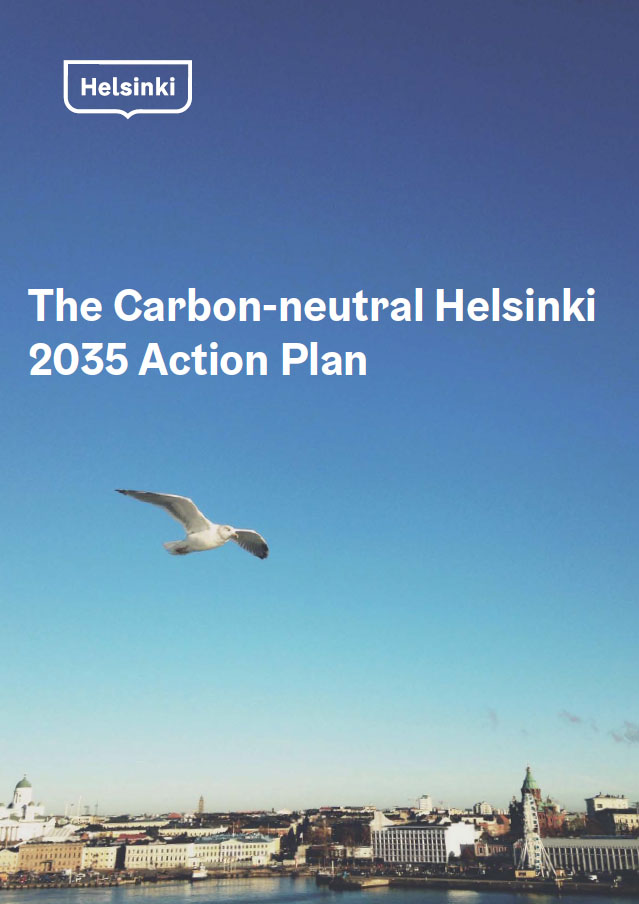Helsinki to become carbon neutral by utilizing data
The City of Helsinki intends to be carbon neutral by the year 2035. The Helsinki Loves Developers event on 22 May 2019 at the Helsinki City Hall focused on finding ways to speed up the energy revolution through the use of open data.

“If we don’t know the extent of the emissions and what causes them, then it’s difficult to reduce them efficiently. Due to this, Helsinki invests in increased accuracy in the monitoring of the emissions”, tells City of Helsinki’s Environment Planner Sonja-Maria Ignatius to the audience of Helsinki Loves Developers.
Data is perhaps the most important tool in the fight against climate change. To be able to cut the emissions of the city, we must establish where and when they occur, what the energy is used for and where easiest energy savings can be made. Ignatius tells that up to 56 % of the emissions of the City of Helsinki originate from heating. The share for traffic is 24 % and the share for electricity 15 %. “In our Carbon Neutral Helsinki 2035 action plan, we have 147 actions, which, when realised, will put us on the right track in reducing the emissions. The objective applies to entire Helsinki, not just the city organisation.”
The aim of the ambitious plan is to reduce the emissions by 80 % from the 1990 level. “The remaining emissions will be compensated by other means, for example by planting forest or increasing the production of wind energy.”
The emissions of the Helsinki region are already decreasing, but a lot has to happen over the next 15 years. One of the 147 climate actions is a follow-up tool for the city’s climate actions and their efficiency. In its climate work, Helsinki invests not only in open data, but more broadly in open decision-making as well. For example, the city wants to make all the decision-making calculation models, background materials and cost estimates open in the preparation stage. “A demo version of the follow-up tool is already on the web, go check it out”, Ignatius offers.
The data is useful not only for the minimisation of the energy use, but also for the maximisation of emissions-free energy production. City of Helsinki’s Energy and climate atlas web service offers data for both purposes. The service, published as open data as a part of Helsinki’s 3D model, is an incredible database of the city’s 80,000 buildings. “The service contains information about the heating sources, energy efficiency improvements and the calculated energy consumption of the buildings”, tells Helsinki Environmental Planner Petteri Huuska.
The counters of the service encourage utilisation of renewable energy sources. The annual solar energy production potential of the wall and roof surfaces of any building in Helsinki is just a few mouse clicks away. “This is just the beginning. In autumn 2019, the service will also have the calculation of geothermal heating potential”, promises Petteri Huuska.

Real time data of a thousand buildings
The other speakers of the developer event presented their own data-based tools for the Helsinki region climate work. Software company Nuuka Solutions’ data platform is currently used in 2,500 buildings in six countries, tells Nuuka’s Olli Parkkonen. Soon, the number of users in the system will increase considerably, as Nuuka’s follow-up and reporting system is currently being constructed in more than a thousand buildings owned by the City of Helsinki. Parkkonen gives the audience a glimpse of the meters, through which it is possible to have a general view of the real-time energy efficiency and utilisation rate of the city’s entire building stock and which can be focused on the energy consumption or air quality of a single building. The data available through Nuuka will also be used in the Carbon Neutral Helsinki follow-up tool.
“Is this available as open data?” asks the audience. “Basically, the information would be available even via the REST API. It is up to the City of Helsinki how the data is opened”, tells Parkkonen. The City’s experts are currently figuring out what data of the system can be published as open data in the near future.
Materials
Watch the Helsinki Channel recording of the event. Duration 1:07:40.
0:00-5:00: Welcome: Tanja Lahti, City of Helsinki/HRI.
5:00-15:50: Carbon-neutral Helsinki 2035: Sonja-Maria Ignatius, City of Helsinki.
15:50-27:50: Environmental and energy consumption data of the City of Helsinki: Petteri Huuska, City of Helsinki.
27:50-40:40: Energy, indoor climate and sustainability data of municipal service buildings: Olli Parkkonen, Nuuka Solutions.
40:40-51:30: Climate Smart Housing Companies Project: Timo Ruohomäki, Forum Virium Helsinki.
51:30-1:00:50: Open energy-themed data sets in HRI: Tanja Lahti, City of Helsinki/HRI.
1:00:50-1:07:40: Why does the City open data?: Otso Kivekäs, Chair of the Helsinki City Council.
Forum Virium Helsinki’s Timo Ruohomäki tells about the Climate smart housing companies project, which encourages private housing companies to join the climate work through simple IoT sensor data. “Thousand euro sensors will already give you a good general picture of the situation in a multi-storey building”, tells Ruohomäki. By means of inexpensive air quality and temperature sensors installed in a few flats in a multi-storey building, it is possible to figure out whether the building’s heating system is balanced and if the indoor temperature remains stable, when the outdoor temperature changes.
The Climate smart housing companies pilot project also makes up a platform for the distribution of MyData collected from the flats of the residents. The residents can use the platform to authenticate third parties to utilise their personal data. By analysing the data, the service providers can produce new services or energy saving hints for the residents.
During the workshop part of the event, the developers got to think by themselves about how the housing companies can strengthen their energy knowledge and how the open consumption data of public properties can be utilised in improving their energy efficiency.
Developers have a lot to give
“Many projects are underway, but can we do more?”, asks Tanja Lahti, the Project Manager of HRI service, from the application developers at the event. Tanja Lahti is convinced that the energy revolution can be boosted through the use of open data. “We have a lot of data and skilled people to utilise it.”
Chair of the Helsinki City Council Otso Kivekäs, a special guest to the event, agrees. The systematic opening of data is a strategic choice for Helsinki, tells Kivekäs. “The City does not have to know beforehand what the data to be opened can be used for. Some data may turn out to be very useful for someone.”
Kivekäs, who has a background in coding, encourages business-minded utilisation of open data, too. “If someone uses Helsinki’s data, helps make the City carbon neutral – and makes a profit out of it – we are welcoming it with open hands.”
Energy-related data available at HRI
HRI’s Project Manager Tanja Lahti’s data hints for creators of digital services that improve the energy efficiency:
- Helsinki metropolitan area Service Map APIs offer information about tens of thousands of services in the Helsinki metropolitan area, from parks and statues to day-care centres.
- Buildings in Helsinki data tells, for example, how the City’s 80,000 buildings are heated.
- 3D models of Helsinki includes data about the annual energy consumption of the buildings. The realised consumption is known for the buildings owned by the City, the consumption data for the other buildings is computational.
- Thermographic map of Helsinki data is produced during winter by filming with an thermographic camera from an aeroplane.
- Photovoltaic potential in Helsinki Region
- Wind power survey for Helsinki 2015

Translation: Henrik Andersson
